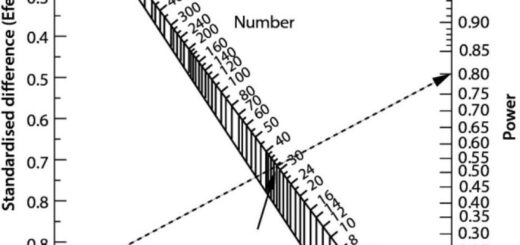Introduction to the five number summary: definition, formulas, and examples

Introductiion to five number summary, In statistics, the five number summary is widely used to measure the different terms of the given set of data. A set of data is a series of numbers separated by commas in unarranged form. Statistics is a branch of science that deals with probability and presenting empirical data.
In this post, we’ll learn the five terms involved in the five number summary along with their formulas and examples.
What is the five number summary?
A set of descriptive statistics that provides information about a dataset or gives you a rough idea about your set of data is known as a five number summary. There are five most important samples values are involved in the five number summary.
- The smallest observation or minimum value of the dataset.
- The first quartile Q1 or the lower quartile.
- The middle value of the data set Q2 or the median.
- The third quartile Q3 of the data set or the upper quartile.
- The largest observation or the maximum value of the data set.
The above five terms of the five number summary are frequently used in statistics and mathematics for different purposes. These five terms can be calculated easily if the set of data is given. You have to arrange the given data set according to the ascending order first.
When the data is arranged according to the ascending order take the first value of the arranged data set that will be the minimum observation of the given data set. Then take the middle value of the arranged data set to get the median or the middle value of the data set.
If the arranged data set has an even number of terms, then you have to take the two middle values of the data set. Then find the mean of the two middle terms to get the median. Simply add both the terms and divide the result by two.
The upper and lower quartiles are the middle term from the start to middle and from middle to end respectively. In the last, arrange the given data set according to the descending order, then take the first term of the arranged data that will be the maximum observation of the dataset.
The formulas of the five number summary
To find the five terms of this summary, there are some formulas and methods. Let’s discuss the formulas or methods to find the five number summary.
- For minimum and maximum observation.
For finding the maximum or minimum terms of the given set of data you have to arrange the dataset in descending or ascending order respectively.
- For the middle value or the median
First of all, arrange the given data set. Then take the middle value if the dataset is odd otherwise take the mean of the two middle values in the case of an even number of terms in the given set of data,
Median = Q2 = ((n + 1)/2) th term
- For the lower quartile
The lower quartile is the median of the lower half of the arranged data set. It contains 25% of the data. The formula for the lower quartile is given below.
Lower quartile = Q1 = ((n + 1)/4) th term
- For the upper quartile
The upper quartile is the median of the upper half of the arranged data set. It contains 75% of the data. The formula for the upper quartile is given below.
Upper quartile = Q1 = (3(n + 1)/4) th term
You can use a five number summary calculator to find these five terms of the given data set in a couple of seconds. Follow the below steps to find the five number summary by using this tool.
Step 1: Input the comma-separated values.

Step 2: Hit the calculate button.

Step 3: The result will show below the calculate button.

How to calculate the five number summary?
The five number summary can be calculated easily by using the formulas and methods. Follow these steps to solve the given data set.
- Arrange the given data set in ascending order and take the minimum value.
- Find the lower quartile of the given set of data.
- Take the middle value of the arranged data set.
- Find the upper quartile of the arranged data.
- Arrange the data set in descending order to take the maximum observation.
Following is a solved example of the five number summary.
Example
Find the five number summary of 12, 8, 14, 2, 9, 16, 21, 3, 18
Solution
Step 1: Arrange the given data set in ascending order and take the minimum observation.
2, 3, 8, 9, 12, 14, 16, 18, 21
Total number of observation = n = 9
Minimum observation of the given data = 2
Step 2: Take the general formula of the first quartile and find the lower quartile of the given set of data.
Lower quartile = Q1 = ((n + 1)/4) th term
Lower quartile = Q1 = ((9 + 1)/4) th term
Lower quartile = Q1 = ((10)/4) th term
Lower quartile = Q1 = ((5/2) th term
Lower quartile = Q1 = 2.5 th term
In the arranged data set the 2.5th term is the mean of the 2nd and 3rd values.
Lower quartile = Q1 = 3 + 8 / 2
Lower quartile = Q1 = 11/2 = 5.5
Step 3: Take the general formula of Q2 of the arranged data set and find the median or the middle observation.
Median = Q2 = ((n + 1)/2) th term
Median = Q2 = ((9 + 1)/2) th term
Median = Q2 = ((10)/2) th term
Median = Q2 = 5th term
In the arranged data set the 5th term is 12.
Median = Q2 = 12
Step 4: Take the general formula of the third quartile and find the upper quartile of the given set of data.
Upper quartile = Q3 = (3(n + 1)/4) th term
Upper quartile = Q3 = (3(9 + 1)/4) th term
Upper quartile = Q3 = (3(10)/4) th term
Upper quartile = Q3 = (30)/4) th term
Upper quartile = Q3 = (15)/2) th term
Upper quartile = Q3 = 7.5th term
In the arranged data set the 7.5th term is the mean of the 7th and 8ths value.
Upper quartile = Q3 = 16 + 18 / 2
Upper quartile = Q3 = 34/2
Upper quartile = Q3 = 17
Step 5: Arrange the given data set according to the descending order to get the maximum observation.
21, 18, 16, 14, 12, 9, 8, 3, 2
The maximum observation = 21
Step 6: Write all the five number summary results.
Minimum value = 2
The first quartile = Q1 = 5.5
Median = Q2 = 12
The third quartile = Q3 = 17
Maximum value = 21
Summary
The five number summary is a wide concept to get a rough idea of the given data set and what how it looks like. In this post, we’ve discussed almost all the basics of the five number summary. Now you can solve any problem on this topic by learning the above post.
How to Interpolate Missing Values in R With Example »




